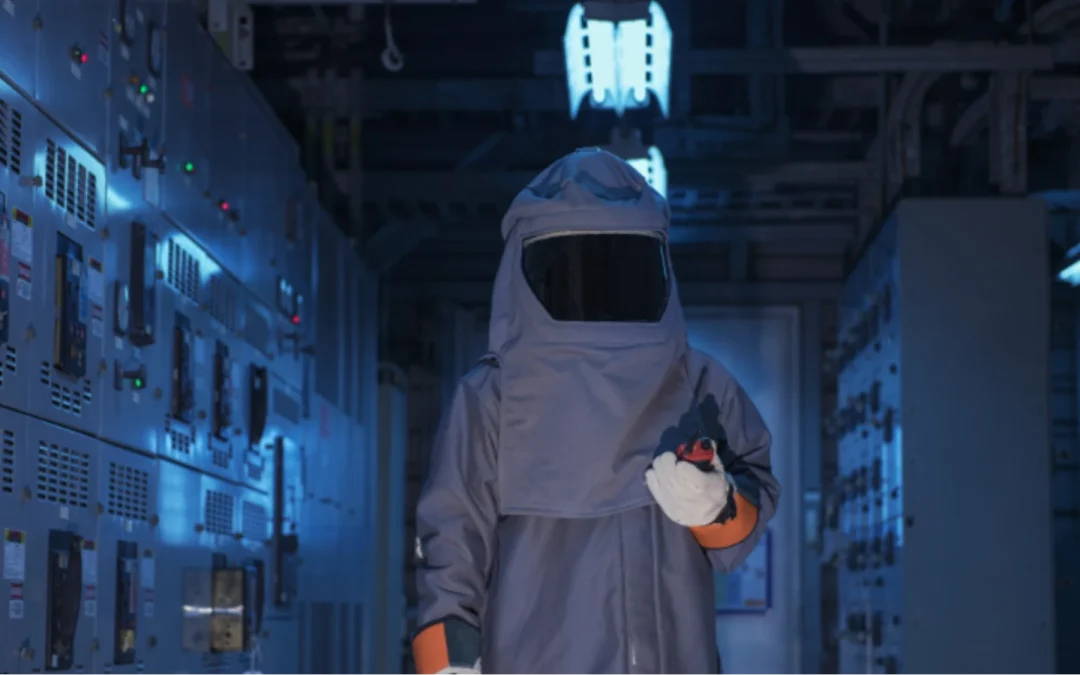You’ve got a facility to run, equipment to maintain, and a team counting on you to keep them safe. But here’s the thing: arc flash incidents don’t send warning letters before they happen. One moment, everything’s running smoothly. Next, a maintenance tech is fighting for their life because nobody understood the risks lurking inside that electrical panel.
Here’s what we’re covering: why arc flash awareness isn’t just another safety checkbox, what actually causes these incidents, and the practical steps you can take to protect your people and equipment. By the end, you’ll know exactly where your facility stands and what to do next.
What’s Really at Stake Here?
Let’s cut to the chase. An arc flash releases temperatures hotter than the surface of the sun. We’re talking 35,000°F. That kind of heat vaporizes metal, creates pressure waves that can throw workers across rooms, and causes burns that… well, let’s just say you don’t want your team anywhere near one without proper protection.
Why Arc Flash Awareness Training Actually Matters
Training isn’t about watching a video once a year and calling it done. Real arc flash awareness training builds a safety culture where your team instinctively recognizes hazards before they become headlines.
When workers understand arc flash hazards (really understand them), they approach electrical work differently. They check labels. They use the right PPE. They maintain proper boundaries.
The training needs to cover:
- How to read and interpret arc flash labels
- Understanding incident energy levels and what they mean
- Proper use and maintenance of personal protective equipment
- Recognizing when to call in qualified personnel (and when not to DIY it)
- Emergency response procedures if something goes wrong
NFPA 70E Compliance: More Than Just Paperwork
NFPA 70E gives you a framework for electrical safety. It tells you how to assess risks, establish boundaries, select appropriate PPE, and document everything properly. If you’re not following it, you’re essentially winging it with your workers’ safety.
The standard gets updated every three years for a reason: electrical systems and safety knowledge evolve. What was acceptable five years ago might not cut it today.
The Arc Flash Risk Assessment: Your Safety Blueprint
You can’t fix what you don’t measure. An arc flash risk assessment is basically a deep dive into your electrical system to identify where hazards exist and how severe they are.
During an arc flash study, engineers analyze your electrical distribution system to calculate incident energy levels at various points. This tells you exactly how much thermal energy workers could be exposed to if an arc flash occurs. From there, you get proper labeling, defined boundaries, and specific PPE requirements for each location.
Many facilities in the Atlanta area put off these studies because of cost concerns. But here’s the reality: one arc flash incident will cost you way more in medical bills, equipment damage, downtime, and potential lawsuits than the study itself. Shaw Consulting Services works with facilities to make these assessments practical and budget-friendly, because safety shouldn’t break the bank.
Getting the PPE Equation Right
Personal protective equipment is your last line of defense, which means it needs to be spot-on. Arc flash PPE isn’t your standard hard hat and safety vest situation. We’re talking about arc-rated clothing, face shields, insulated gloves, and flame-resistant layers designed to withstand specific levels of incident energy.
But here’s what many facilities get wrong: they buy the gear, hand it out, and assume they’re done. PPE requires regular inspection, proper storage, and replacement when damaged. A tear in arc-rated clothing or a cracked face shield can mean the difference between walking away and a trip to the hospital.
Arc Flash Prevention: Playing Defense
The best arc flash incident is the one that never happens. Prevention starts with proper electrical maintenance and smart operational procedures.
- Routine Maintenance: Loose connections, dust buildup, and degraded insulation all increase arc flash risk. Regular infrared thermography and breaker maintenance catch these issues before they become problems.
- Lockout/Tagout Procedures: Working on de-energized equipment whenever possible eliminates arc flash risk entirely. Proper lockout tagout procedures ensure equipment stays off while someone is working on it.
- Barrier Installation: Physical barriers and remote operation capabilities let workers perform tasks from outside the arc flash boundary.
- Engineering Controls: Sometimes the answer is redesigning systems to reduce incident energy levels or eliminate exposure altogether.
Building a Culture Where Safety Sticks
Here’s the truth: you can have perfect labels, top-tier PPE, and comprehensive studies, but if your culture doesn’t prioritize safety, none of it matters.
Start by making electrical safety visible. Post reminders near electrical rooms. Include arc flash safety in regular team meetings. Celebrate near-miss reports as learning opportunities instead of failures. When workers see that leadership genuinely cares about their well-being (not just checking compliance boxes), they engage differently.
What About the Cost?
Let’s address the elephant in the room. Yes, implementing a comprehensive arc flash safety program requires investment. Studies, training, PPE, labeling… it adds up.
But let’s do some quick math: The average arc flash injury costs hundreds of thousands in medical expenses and lost productivity. Equipment damage can run into the millions. OSHA violations carry hefty fines. One incident can shut down operations for days or weeks.
Compare that to the cost of prevention. Even a complete arc flash study, training program, and PPE setup costs a fraction of a single serious incident.
Frequently Asked Questions
What is arc flash awareness, and why is it important?
Arc flash awareness means understanding the serious risks associated with electrical arc flashes and knowing how to prevent them. It’s important because arc flash incidents can cause severe burns, injuries, and even death, along with significant equipment damage and downtime.
How often should arc flash awareness training be conducted?
NFPA 70E recommends refresher training at least every three years, but many organizations provide annual training or more frequent sessions when electrical systems change. New employees should receive training before working near electrical hazards.
What’s the difference between arc flash and arc blast?
An arc flash is the intense light and heat released during an electrical arc event. An arc blast is the pressure wave and shrapnel created by the same event. Both happen simultaneously during an arc flash incident, and both pose serious dangers to nearby workers.
Do I need an arc flash study if my facility is small?
Yes. Arc flash hazards exist in facilities of all sizes. If you have electrical equipment rated 50 volts or higher (which includes most commercial and industrial facilities), you should conduct an arc flash risk assessment to identify hazards and ensure proper labeling and safety procedures.
What PPE is required for arc flash protection?
Required PPE depends on the incident energy level at each location, but typically includes arc-rated clothing, face shields, insulated gloves, safety glasses, hard hats, and hearing protection. Your arc flash labels will specify the exact PPE category needed for each piece of equipment.
How much does an arc flash study cost?
Costs vary based on facility size, complexity, and equipment count, but typically range from a few thousand dollars for small facilities to tens of thousands for larger industrial operations. The investment is minimal compared to the cost of a single arc flash incident or OSHA violation.
Can arc flash incidents be completely prevented?
While you can’t eliminate all risk, proper maintenance, training, de-energized work practices, and engineering controls can dramatically reduce the likelihood of arc flash incidents. Many facilities go years without incidents when they implement comprehensive electrical safety programs.
What information should be on an arc flash label?
Arc flash labels must include the nominal system voltage, arc flash boundary distance, incident energy or PPE category, working distance, date of the study, and any special precautions. Labels should be clearly visible and located on all relevant electrical equipment.
Prioritize Arc flash awareness
Your workers should go home the same way they came in: safely. Arc flash awareness makes that happen.
Start where you are. Get an assessment done to understand your actual risks. Train your people properly. Provide the right equipment. Build a culture where safety is everyone’s job.
If you’re in the Atlanta area and wondering where to begin, Shaw Consulting Services can help you navigate the whole process, from initial power studies and arc flash risk assessments to ongoing electrical breaker maintenance and testing. Reach out to us today to schedule a consultation and take the first step toward a safer workplace.

